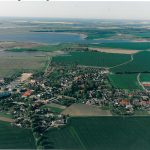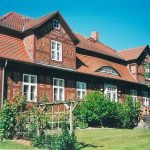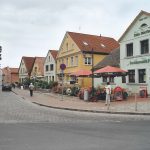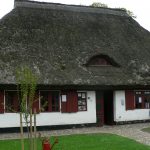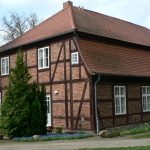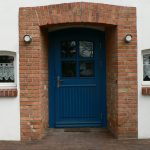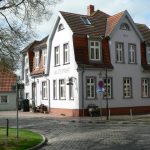Gingst, Mecklenburg-Western Pomerania, Germany
The municipality of Gingst has 1,482 inhabitants and is located on the western part of Rügen, on the fringe of the areas used intensively for touristic purposes. Gingst was originally characterized by agriculture, but after the fall of communism it had to re-position itself and find its place in the regional network as a locality with a new central meaning.
The initiative started in the 90s with revitalizing the existing building structures. Nearly 90% of the old buildings could be renewed up to today. Notable is the high degree of sensibility and individuality and the commitment, which are the bases for this process and have led to excellent results. But it is not only the old facades of the formerly dilapidated buildings that have a fresh look; the traditional village life has also been revived. Infrastructure facilities have been located in historic buildings, contributing to the village’s new vitality. A piece of identity could be reclaimed and at the same time constitutes the basis for further developmental steps. Interested and committed citizens are part of this development.
Other important steps were the creation of the outdoor museum, which enables its visitors to travel back in time, and the weekly “Green Market”, which bridges to the agricultural sector and therefore enables the marketing of regionally produced products. The market, the museum and the leisure park also contribute to developments in the area soft tourism.
The partnership with the model school in Gingst is of material importance for the future development of the municipality. The whole-day school endeavors to further permanent exchange and links with the facilities of the municipality and the region. Cooperation with senior homes, societies and enterprises in the region ensure that every day’s life is included into the education, inducing an intensive exchange of the young citizens with their homeland and forging understanding between old and young. An exemplary approach regarding an integrative approach across the generations!
In view of energy, the objective is to reduce consumption through remodeling measures, especially in reference to old residences and the school building. This also includes the switch to a wood chips heating plant. The building of a bio gas plant is also in the planing stage.
The village renewal in Gingst is a process of many individual steps, supported by the decision-makers in the municipality as well as the populace, and it contributes considerably to the new blossoming of the village.
Gingst stands out due to for their comprehensive, professional and sensible renewal of old building structures, the re-use and revitalizing of historic buildings, the identity-giving integration of the school into the daily life of the villagers and the efforts to strengthen tourism and local economy.
Evaluated: 2010

